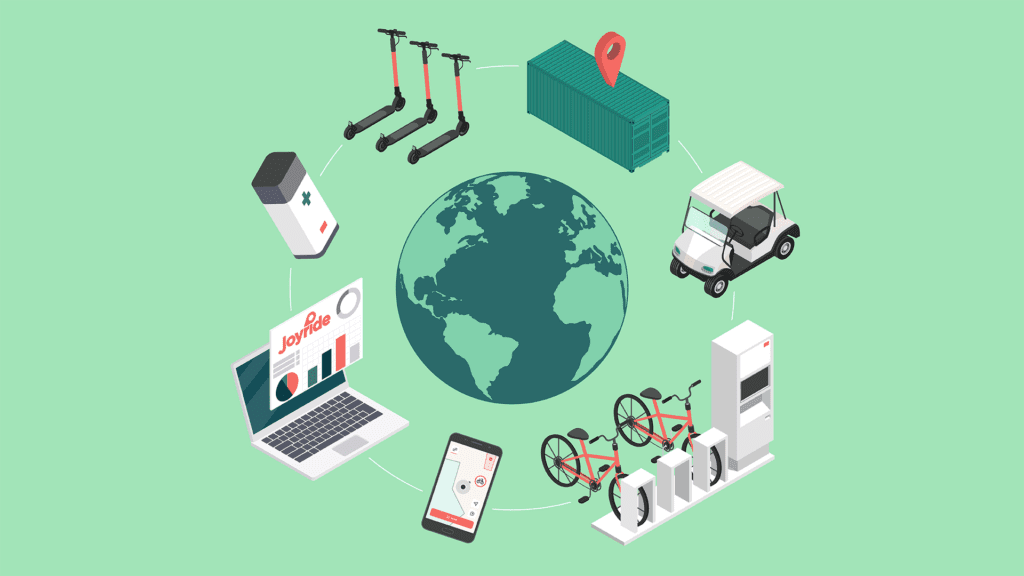All share fleets require a minimum level of density in order to be profitable.
As the business model for public fleets is predicated on convenience and utility, your riders must be able to easily find and access a vehicle close to their search location. In this blog post, we explain the various considerations an independent operator should weigh when determining how many units to launch.
Coverage area definition
The coverage area refers to the boundaries you intend to set for the usage of your fleet. These boundaries will indicate to your riders where they are allowed to use your bikes or scooters.
Coverage area size
Many prospective operators will feel inclined toward covering an entire city/town in order to maximize the convenience to their riders. However, this decision comes at a cost. A fleet’s density will subsequently decrease if more units are not released. Even massive, venture-backed fleets do not allow users free range within the entirety of a city.
As initial capital expenditure may be an issue, an independent operator may wish to consider confining his or her fleet to the most populated neighborhood with the most relevant demographic profile in the region.
Your riders will have added incentive to use your system if they can travel a sufficient distance. Most fleets start with at least 10km2 for a coverage area.
Fleet size
Studies and best practices suggest having no fewer than three to five units per thousand people within the set geographic boundary.
Fleet size = [Population / 1,000] * 4
Fleet positioning
Your units must be close enough to a potential rider that he or she is encouraged to walk to the location to collect a vehicle. Best practices suggest that the distance between units should be no more than 100m for optimum fleet usage.
Fleet availability
An important consideration regarding your fleet is that not all of your units will be active on any given day. You may choose to withhold deploying some for operational reasons. They may also not be available due to the need for maintenance or, in the case of electric vehicles, for recharging. Therefore, an independent operator must factor in this unused percentage (typically 20-50%) into his or her models when considering how many units to purchase.
Consequences
A profitable fleet must be of sufficient size; it is important to calculate before launching.
Launching with too few vehicles will almost certainly ensure that the independent operator does not see a return on investment.
Conclusion
Typically, 20-50 units won’t cut it for an independent public fleet. If you’re serious about your fleet, put out three to five vehicles/1,000 people in your coverage area. Your coverage area should be at least 10km2. Purchase 20-50% more units than you want to have deployed on any given day.






